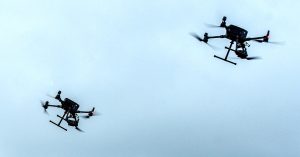
Management training is needed too for the Algorithms
Why are companies using algorithmic management to improve their employees’ welfare? The case of Yokohama Choudhury, D.S. Mohanty, J.P. Kinnear, S.L.
This leads to a strange situation. On the one hand, more protection is needed. The welter of existing law makes it more difficult for organizations to use algorithmic management in a responsible way. The new platform work directive may mean that platform workers who have been under protected by the law may have more protection against monitoring and error prone algorithmic management.
That’s right—even as we’ve shifted toward a hybrid model with many workers returning to offices, different methods of employee surveillance (dubbed “bossware” by some) aren’t going away; it’s here to stay and could get much more invasive.
It’s not hard to see why traditional organizations are using algorithmic management. The most obvious benefits have to do with improving the speed and scale of information processing. Thousands of applications can be received for a single open position in recruiting and hiring. automated screening tools can help sort through this large amount of information. In some cases, the use of management software might help improve performance by placing workers with work. And there are some potential, if so far mostly unrealized, benefits. Designed carefully, algorithmic management could reduce bias in hiring, evaluation, and promotion or improve employee well-being by detecting needs for training or support.
It is clear that harms and risks are involved with workers and organizations. The systems aren’t always very good and sometimes make decisions that are obviously erroneous or discriminatory. They require lots of data, which means they often occasion newly pervasive and intimate surveillance of workers, and they are often designed and deployed with relatively little worker input. The result is that sometimes they make biased or otherwise bad management decisions; they cause privacy harms; they expose organizations to regulatory and public relations risks; and they can erode trust between workers and leadership.
“Datafication” or “Informatisation” is the practice by which every movement, whether offline or online, is traced and saved as necessary for statistical, financial, commercial and electoral purposes,” according to the book.
Some of these methods can be used to track where employees are, what they’re doing at any given moment, what their body temperature is, and what they’re viewing online. The data that employers can collect can be used to score workers on their individual productivity or to track data trends across the entire workforce.
These tools aren’t being rolled out only in office spaces, but in work-from-home spaces and on the road to mobile workers such as long-haul truck drivers and Amazon warehouse workers.
As you might imagine, the laws of the land have had a hard time keeping up with the quick pace of these new tools. In most countries, there are no laws specifically forbidding employers from, say, video-monitoring their workforce, except in places where employees should have a “reasonable expectation of privacy,” such as bathrooms or locker rooms.
The 1986Electronic Communications Privacy Act of the US makes it clear that employees cannot intercept employee communication, but that they can be stopped to protect the privacy and rights of the employer or if they have prior permission.

